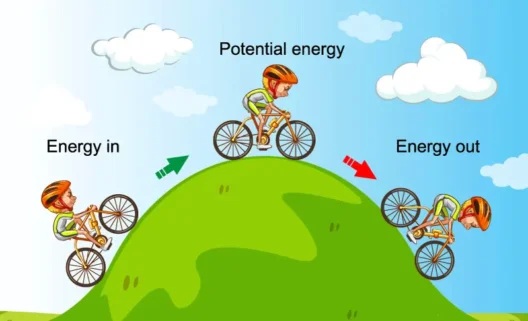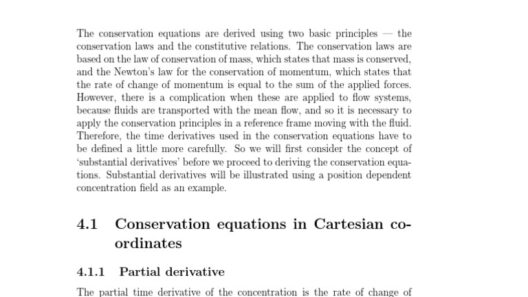When we consider energy conservation, it is akin to understanding the primal harmony of nature. Just as a river flows with purpose, shaping the landscapes around it, energy too must be harnessed and conserved with intentionality. Energy conservation occurs not in isolation, but through a tapestry of engaging conditions that intertwine human behavior, technological advances, and the innate principles of physics. This article delves into the fascinating dimensions of energy conservation, illuminating when and why it is achieved.
Understanding the conditions under which energy is conserved is crucial. Whether it is the subtle warmth of a well-insulated home or the rhythmic cadence of renewable resources, energy conservation manifests in myriad forms. Let us embark on this exploration to unveil the nuances of energy conservation that might remain hidden beneath the surface.
Energy Conservation in Everyday life: The Ordinary Becomes Extraordinary
Everyday actions embody a form of energy conservation, where the mundane rises to meet the extraordinary. Take, for instance, the simple act of turning off lights when leaving a room. Each flick of the switch is a conscious decision to conserve energy, a momentary pause in the ceaseless demand for electricity. This habitual practice may seem insignificant, yet its cumulative effect is profound. It gives rise to a culture of awareness, prompting individuals to become stewards of energy.
Moreover, energy conservation thrives in the settings of our daily lives through various practices. Consider using public transportation or riding a bicycle instead of driving. Such choices do not merely reflect individual preferences; they arise from an understanding of how personal decisions ripple outward, affecting our carbon footprint and the environment at large. These choices illustrate that energy conservation is an integral fabric woven through societal engagement, creating community-centric solutions to grappling with energy consumption.
Technological Innovations: The Unsung Heroes of Energy Conservation
No discussion on energy conservation would be complete without acknowledging the profound impact of technological innovations. These advancements serve not only as tools but as catalysts for change. A paramount example lies within the realm of energy-efficient appliances. The transformation from incandescent bulbs to LED lighting is emblematic of how technology reshapes our approach to conserving energy.
Consider the metaphor of the phoenix rising from the ashes—energy efficiency technologies have emerged from a legacy of wastefulness to establish new standards that redefine energy consumption. The Energy Star rating system serves as a guiding star, illuminating our path toward purchasing decisions that favour energy-efficient products. In homes and industries alike, the adoption of smart technologies, such as programmable thermostats, demonstrates the practical applications of modernity, optimizing energy use without forgoing comfort or convenience.
This landscape of technological advancement extends beyond individual appliances. Smart grids and advanced energy management systems are revolutionizing the way we generate, distribute, and consume energy. Through a symphony of sensors, data analytics, and real-time monitoring, these systems foster a responsive energy infrastructure that optimally manages energy flow, reducing waste and enhancing conservation efforts at a macro scale. In this collaborative dance between innovation and conservation, we witness the birth of a more sustainable future.
The Role of Environment: Nature’s Call for Energy Conservation
Beyond human agency and technological interventions lies the undeniable influence of environmental conditions. Nature itself cues us into the essence of energy conservation. For instance, the geographical orientation of a building dramatically impacts its energy efficiency. Homes that are strategically placed to leverage natural light or shield against harsh winds are prime examples of design that resonates with nature’s inherent principles. When energy consumption aligns with natural forces, conservation becomes an effortless rhythm within that ecosystem.
Additionally, seasonal variations provide an intricate backdrop against which energy conservation unfolds. In winter, layering oneself in warm clothing curtails the need for excessive heating, while in summer, embracing natural ventilation invites the gentle breeze, thus keeping air-conditioning at bay. These cyclical patterns in nature exemplify how seasonal awareness can shape our energy consumption patterns, reminding us to stay in tune with the environment that surrounds us.
The Collective Effort: Uniting for a Sustainable Tomorrow
As we delve deeper into understanding the conditions of energy conservation, we must confront the essential truth—energy conservation transcends individual actions; it thrives in collective consciousness. Each small effort aggregates into a larger movement, engendering profound societal change. Campaigns promoting renewable energy sources, legislative initiatives mandating energy efficiency standards, and grassroots movements advocating for sustainable lifestyles serve as testaments to this truth.
Humanity stands at a crossroads, laden with the responsibility to harness the power of collective intent to engage in energy conservation. As communities rally around the shared vision of sustainability, initiatives like community solar projects and local energy co-ops arise from the ashes of unbridled consumption, demonstrating that our path to energy conservation is intertwined with social activism and communal cooperation.
In conclusion, energy conservation is not merely an abstract concept; it thrives within the intersection of human behavior, technological advances, and environmental conditions. By fostering a culture of awareness and embracing innovative solutions, we can evoke a paradigm shift in energy usage. Ultimately, energy conservation is a call to action—an invitation to step into the rhythm of sustainability and prioritize our planet’s health. In this moment, when we choose to conserve, we not only preserve energy but also enable a more harmonious existence with the world around us.








